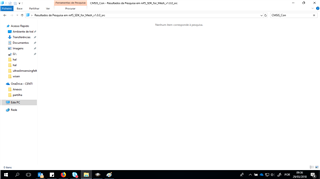

- #Segger embedded studio tutorial how to#
- #Segger embedded studio tutorial software#
- #Segger embedded studio tutorial license#
- #Segger embedded studio tutorial series#
You just choose target device, target interface and speed and its elf file. nRF5 SDK - Tutorial for Beginners Pt 4 - Segger Embedded Studio Explained in Easy Steps Download Song Information: MP3 Video How to use Ringtone maker for.
#Segger embedded studio tutorial software#
You can also use J-scope, it is something like Freemaster for J-link is a free-of-charge software to analyze and visualize data on a microcontroller in real-time, while the target is running. J-Mem Memory Viewer, but it is for J-link too, because you must always stop the program There are a lot of these tools, which you can use for the watching variables for J-Link.Īnother one is e.g. It contains the data which is normally exported immediately after it has been captured from the ETM. We will also show a simple example of how to debug and find the RAM require. Here are the main differences, while ETM Trace is shortcut for Embedded Trace Macrocell, CoreSight Trace Macrocells - ARMĪnd ETB is shortcut for Embedded Trace Buffer, small, circular on-chip memory area where trace information is storedĭuring capture. This video tutorial will cover the basics of debugging in SEGGER Embedded Studio. The differences between J-Trace and J-Link is that J-Trace periodically halt cpu and read data from registers. If not we recommend to contact the silicon vendors support.As Jorge m entioned, you can watch variables via expression view in KDS, but you must stop the program. Usually they are available publicly on their website. SVD files are provided by the silicon vendor.
#Segger embedded studio tutorial series#
Power up the nRF5 Series development board: 2.
#Segger embedded studio tutorial license#
products/development-tools/ozone-j-link-debugger/ Got the project ported over to Segger Embedded Studio, which turned out to be MUCH nicer (and faster) then using IAR EWARM, and also better then using. NRF5 Series: Developing With SEGGER Embedded Studio Getting Started Guide Ses 1. Lesson5 Segger Embedded Studio for Nordic nRF5x Tutorial: Go over all the steps needed to download, install, configure, license and test the SEGGER Embedded studio for Nordic nRF5x devices and development boards.Then, we learn how to setup ,and run an SES project targeting an nRF5x chip from scratch. check to see if the compiler is the C++ compiler. If you are using other third party toolchains with proprietary elf formats we recommend to use our universal debugger Ozone instead: SEGGER Embedded Studio provides RTT printf () functionality automatically. However keep in mind that ES only supports debug symbols from gcc or clang based toolchains. Now all debug symbols and the download will be loaded from the external elf file. In that case all you have to do is select the correct target device in your project (as connect sequences vary widely between targets) and set the elf file from the external toolchain as the main load file. Use_an_externa…hain_with_Embedded_Studio If you are looking to use an external toolchain with ES see here: Is this possible?Īnother and last point, where and how i can get the svd file for a given target ? Is the silicon(STM32L053R8) provider the responsible to provide this? In Embedded Studio i didn t find the way.

Is there any step by step tutorial/documentation for this scenario?įor example in IAR workbench IDE (Sorry for mentioning your competitors), i just have to load the elf, select the target and the HW probe and this works, i can debug, watch viariables ,breakpoints. Tutorial: Creating Bare-bare Embedded Projects with CMake, with Eclipse included. I tried to load the elf file in the environment and hence had no luck no flash or debug the STM32 target. Posts about Segger written by Erich Styger. Version control features enable automatic application deployment. The powerful project manager enables the management of projects large and small. This means smooth, efficient development operations thanks to its wide range of features. I think the IDE is made for this purpose and does what it has to do for any plattform. Embedded Studio is the all-in-one solution for managing, building, testing and deploying embedded applications. Nonetheless, I would prefer using Embedded Studio IDE for the same purpose (only debugging, flashing purposes). Just a hint, on the linux plattform, i had to add the : "armToolchainPath": "/home/sbm_linux/gcc-arm-none-eabi-9-2020-q2-update/bin/" in the launch json file. I tested and adapted it to my target on a Linux and Windows. Once again congratulation to the Segger team for such a description. I followed this tutorial to flash and debug correctly my target (tested (STM32L053R8)).

Currently i have a separate build tool chain (Scons, autotools,cmake.


 0 kommentar(er)
0 kommentar(er)
